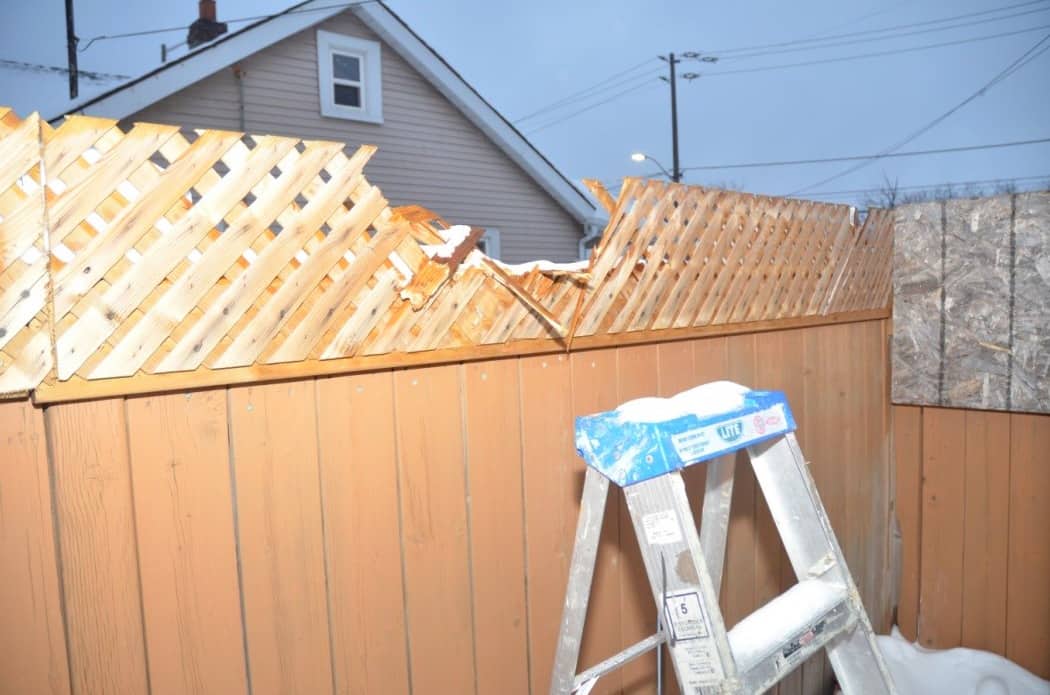Peel Police Cleared in Teen’s Mississauga Backyard Arrest
Published February 20, 2018 at 3:25 pm

Charges aren’t being laid against a Peel police officer after a 16-year-old boy was seriously injured during his arrest in Mississauga, Ontario’s Special Investigations Unit has ruled.
“I have no reasonable basis to believe that the [subject officer] has committed a criminal offence and there are no grounds for proceeding with charges against him in this case,” said the SIU’s director Tony Loparco.
The incident unfolded on Dec. 17, 2016, at 4:30 a.m.
Officers arrested the complainant after a foot chase following an attempted break and enter.
The teen climbed several fences in an effort to evade the officers, but was found hiding in a shed in a fenced backyard.
He was ordered out of the shed and handcuffed.
The backyard where the teen was arrested had a wooden fence and lattice at the top.
“There was one gate to the street on the north side of the property near the garage, but it was barricaded,” the report reads.
The teen entered the backyard by jumping the fence, as did the police officers.
“To remove the complainant from the backyard, he was required to climb an aluminum step ladder that was located near the house and bend over the top of the fence, and a police officer on the other side of the fence would pull him over,” the report reads.
Officers had to get the complainant over a fence and in the process, he fell – face first – on the ground.
The teen was taken to hospital and examined, but no injury was discovered except minor swelling.
Later that day, the complainant was taken to a second hospital as a precautionary measure, where he was diagnosed with a fractured right orbital bone.
There were no civilian witnesses, so it was the complainant’s version of events versus police.
The teen alleges that following his arrest, he was punched by an officer in the ribs and stomach before going over the fence, and thrown and repeatedly hit in the face by the other officer, causing his injury after going over the fence.

From a review of the records from both hospitals, “it appears that there were no other observed bruises or marks or noted or reported tenderness to any other part of his body. Nor do the photos reveal any other injuries to the complainant’s face,” Loparco wrote.
“This is concerning as one would reasonably expect there to be some physical indication arising from the lengthy and brutal beating by fists and knees and batons as alleged by the complainant. But there was nothing except the obvious swelling and cuts around the complainant’s right eye.”
The teen’s “lack of truthfulness” when discussing the person he was with that morning” – a second suspect was still outstanding at the time – “and the corresponding attempt to minimize his role in the events, brings his credibility into question,” Loparco added.
The teen’s injuries likely happened while he was with the subject officer and “the question, therefore, becomes whether the [officer] should be held criminally responsible for them,” said Loparco.
The subject officer was aware the teen was handcuffed and “knew he was required to grab the complainant as he had come over to prevent a fall. Unfortunately, as the [officer] grabbed the complainant’s coat, some event occurred on the other side of the fence that he was unaware of, and the complainant came over in one movement, with all his height and weight,” Loparco wrote.
“I accept that the [officer] could not stop him from falling. Accordingly, as far as the [officer]’s involvement in the fall over the fence goes, it was an accident that he was unable to prevent and he should not be held liable for any resulting injury to the complainant.”
While the officers’ decision to remove the teen from the backyard by putting him over the fence while handcuffed “with his hands behind his back was ill-advised and not well considered,” Loparco said, it doesn’t reach the level “of being a marked and substantial departure from the conduct of a reasonably prudent person in the circumstances, let alone amount to a wanton and reckless disregard for the well-being of an individual such that an offence of criminal negligence causing bodily harm might be made out.”
Photos courtesy of Ontario’s Special Investigations Unit
insauga's Editorial Standards and Policies advertising





